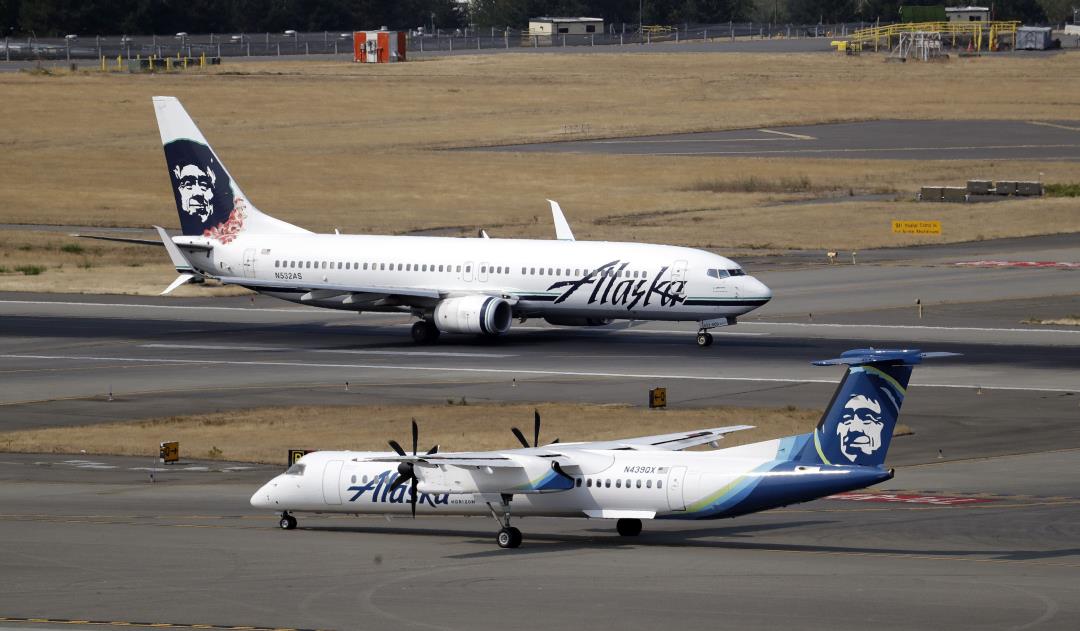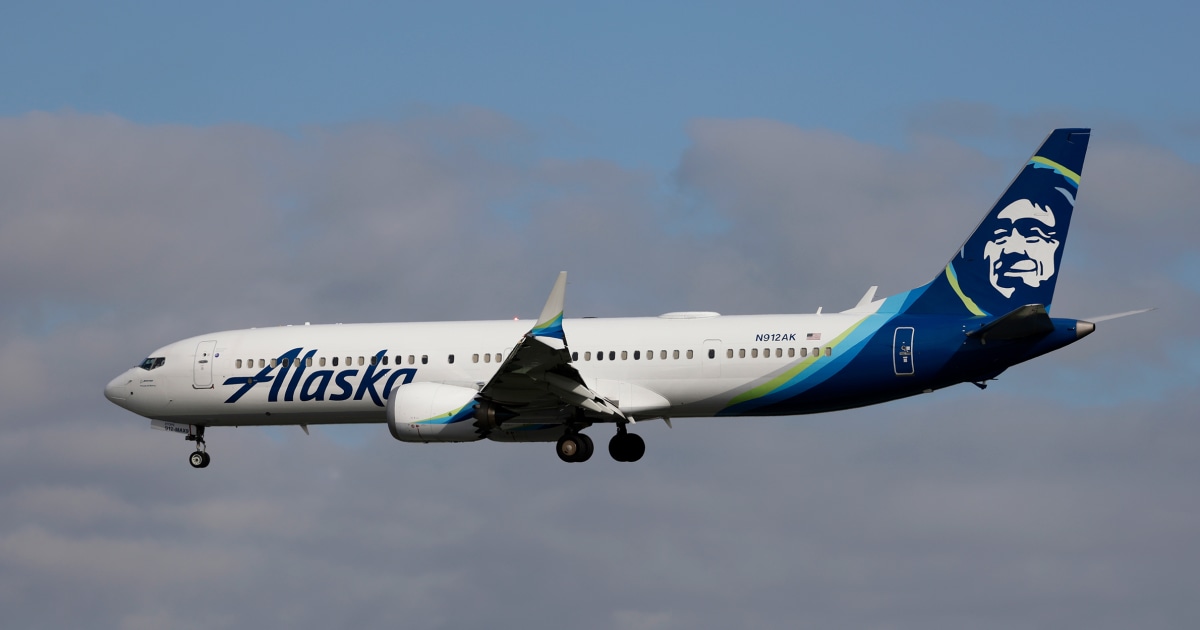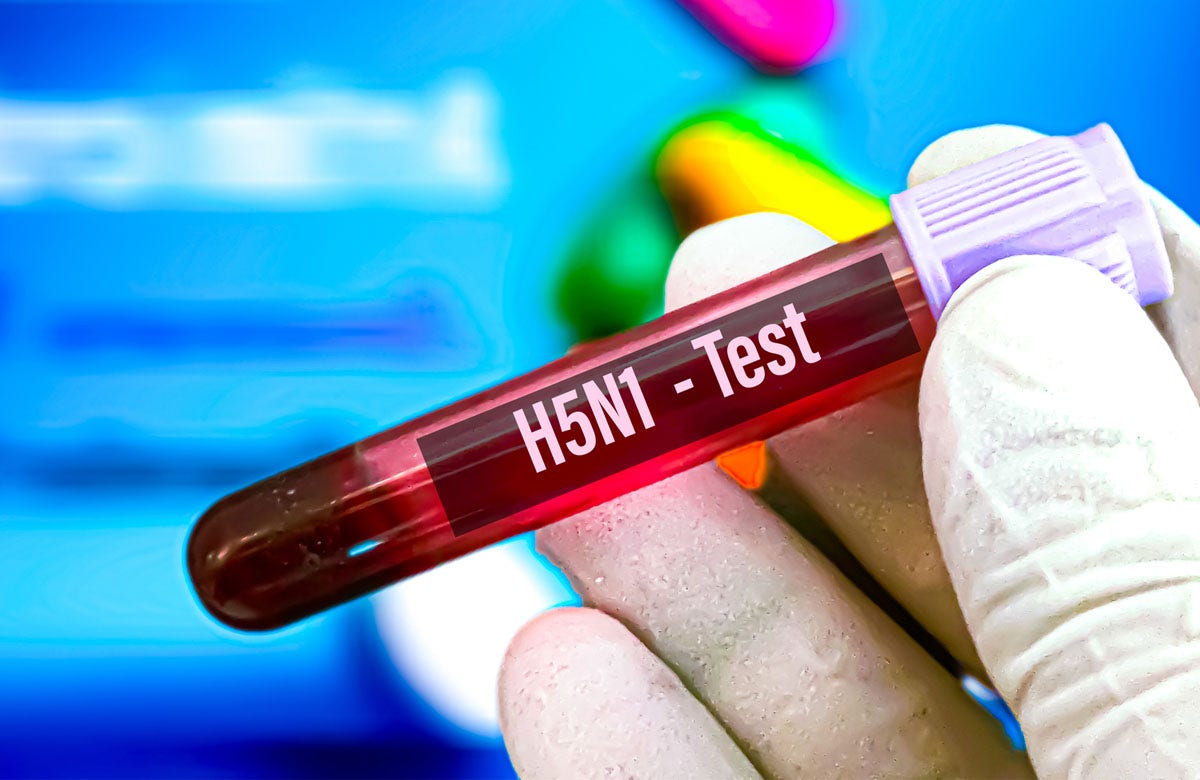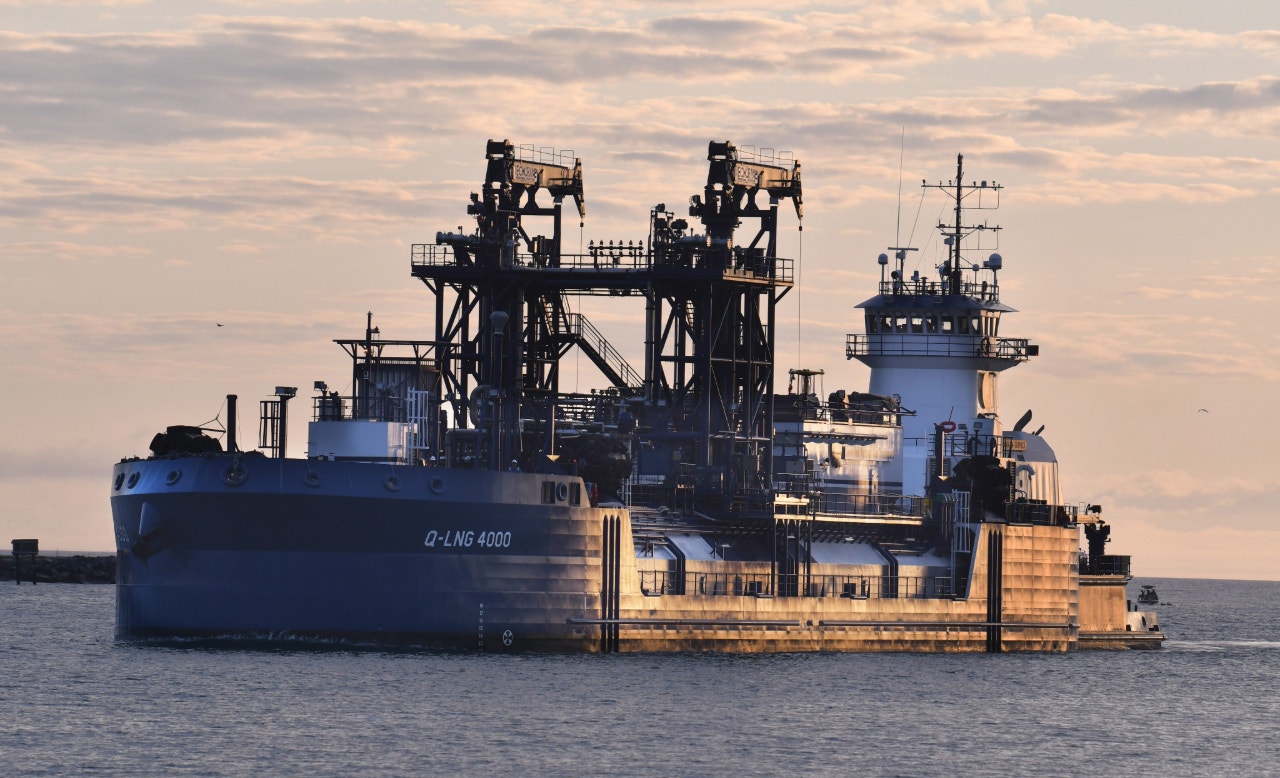Alaska
Athletes of the Week: 2006 Alaska Rush Soccer Club makes history
/cloudfront-us-east-1.images.arcpublishing.com/gray/DZILJ3PQBRCZHOZ7B672TNVSBU.jpg)
ANCHORAGE, Alaska (KTUU) – The soccer cleat fit perfectly for the 2006 Alaska Rush girls soccer club, whose Cinderella run last month at the 2023 U.S. Youth Soccer Far West Regional Tournament in Boise, Idaho, ended with a championship.
The program became the first from the 49th state to win the prestigious tournament that features the best teams in the region from each age group after taking down Utah in the championship game 4-1.
“In 30-plus years it has never happened for Alaska teams that I’ve been aware of and I have been told it has never happened.” 2006 Alaska Rush coach Chris McKay said. “It is never, ever something that Alaska teams aspire to actually win the tournament. We hope to maybe make a good showing, hold a North Cal or South Cal team to a reasonable score line, but to actually go and compete and make it to the quarterfinals and then from there even dream of getting to where we got to the finals is something that has never been realized before.”
In the semifinals, Makenna Harris scored a hat trick including the game-winning goal in overtime to send an Alaskan program to the title game for the first time.
“In the finals, we were like, ‘Okay, we have made history, we didn’t come this far to get second place,’” Katelynn Seibert said.
”We just played like we had nothing to lose because we really didn’t,” Ali Adkins added.
Many of the members of the team had been playing together for years and knew their time remaining on the field together was ticking down.
“This is one of our last tournaments as a team together, so I think that since we know that we’re like, ‘we got to put it all out there,’ and we are just having fun mostly,” Lili Boshell said at practice.
And the program was feeling the support from Alaska and beyond.
“It was crazy, there were some people at the field that were from other teams that were watching us and everyone was so happy and so proud and it is just kind of unreal, it was a crazy feeling,” she added.
”It was amazing because all of the Alaska teams that were there, they came and watched and they were just so supportive. It is just such a great group,” Seibert said. “When we came back home there were people that I had never met that were like, ‘Hey, you’re from the Alaska Rush team?’ It was just great to have that support.”
While Alaska is typically represented at this tournament, past results, plus limited outdoor training and exposure often lead to these programs being overlooked by opponents.
”This was my fifth time at Regionals and the first time we were losing 12 and 13-0, then we started to win some, tie some, these girls are amazing, I am so proud.” Seibert said.
”It is actually really cool because everyone goes into the game thinking that it is just Alaska and we show them that we are better than that,” Adkins said. “I feel like you look at the name and you’re like, ‘This will be [an] easy breeze’, but we weren’t that easy breeze.”
Proving to other youth soccer programs in the area that what seems impossible, is possible.
”Alaska can make it and you can do it and just because you’re from a smaller state and don’t have that much competition doesn’t mean anything. I hope the younger generation can look up and see that and know that they can do it too,” Boshell said.
“I hope it shows, not only girls but boys soccer too, that you can compete,” Seibert said. “There has always been such a gap between Alaska and the Lower 48, but going down and competing shows that we are just as good.”
”I think it will really help the younger groups know that they can do it in the future,” Adkins said. ”I feel like we really just set up a pathway for their success.”
The 2006 Alaska Rush Girls Soccer Club represents the state and region at the 2023 U.S. Youth Soccer National Championships in Orlando, Florida, July 17-23.
Copyright 2023 KTUU. All rights reserved.

Alaska
Eagle Strike Forced Plane to Turn Around in Alaska

Days before the air disaster in South Korea, a flight in Alaska also experienced a bird strike, but the effect was not as catastrophic. Alaska Airlines said Horizon Air Flight 2041 from Anchorage to Fairbanks was forced to turn around on Christmas Eve after an eagle hit the plane, NBC News reports. The bird strike happened soon after takeoff from Ted Stevens Anchorage International Airport. “The captain and first officer are trained for these situations and landed the aircraft safely without any issue,” Alaska Airlines said. Horizon Air and Alaska Airlines are both owned by Alaska Air Group. Passengers were put on another flight to Fairbanks and the only casualty was the eagle.
Passenger Michelle Tatela tells KTUU that police cars surrounded the plane when it landed. “Normally, it would be a scarier situation, but knowing that it was a bird … and then they said the eagle was going to the eagle hospital, and he had a broken wing,” she says. Officials at the Alaska Bird Treatment and Learning Center say the eagle was brought in on Christmas Eve but it had to be euthanized because of severe damage to its wing. “Everybody was really excited that they said the eagle had been removed and he was going to the sanctuary,” Tatela says. “We’re hoping for a happier ending for the eagle, but it is a jet, so there’s that.” (More bird strike stories.)
Alaska
Alaska Airlines plane was struck by an eagle, forcing flight back to the airport

An Alaska Airlines flight on Christmas Eve from Anchorage to Fairbanks was forced to turn around after an eagle hit the plane.
On Sunday, a major plane crash at a South Korean airport that killed 179 people and left just two survivors is also believed to have been caused by a bird strike — meaning a collision between a bird and an aircraft.
Alaska Airlines flight 2041 had taken off from Ted Stevens Anchorage International Airport at 11:40 a.m. local time on Dec. 24, but turned around and returned about 30 minutes later, according to FlightAware data. That flight typically takes about an hour.
Passenger Michelle Tatela was visiting from Chicago when the incident happened.
“We’re in the air, and after a few minutes, we were told we were turning back around out of an abundance of caution, to come back to Anchorage,” she told NBC affiliate KTUU of Anchorage.
When the plane landed back in Anchorage, she said passengers learned that a bird strike involving an eagle was behind the sudden return.
“The eagle survived at that time,” Tatela told the station. “And there were a bunch of police cars around the plane. Normally, it would be a scarier situation, but knowing that it was a bird … and then they said the eagle was going to the eagle hospital, and he had a broken wing.”
However, the eagle’s wing damage was too great for rehabilitation and it was euthanized on arrival, Bird Treatment and Learning Center Executive Director Laura Atwood said, KTUU reported.
“Everybody was really excited that they said the eagle had been removed and he was going to the sanctuary,” Tatela said. “We’re hoping for a happier ending for the eagle, but it is a jet, so there’s that.”
She and other passengers were put on another flight to Fairbanks.
An Alaska Airlines spokesperson told the station that no emergency was declared and that the captain and first officer are trained for situations like a bird strike. NBC News has reached out to the airline for further comment.
The spokesperson added that the aircraft was removed from service for inspection and has since been returned to service.
In the case of Sunday’s plane tragedy in South Korea, the pilot of Jeju Air Flight 2216 had declared mayday after issuing the bird strike alert, said Joo Jong-wan, director of the Aviation Policy Division at South Korea’s Ministry of Land, Infrastructure and Transport.
The plane skidded off the runway while landing at Muan International Airport, about 180 miles south of Seoul, and burst into flames after crashing.
Joo said the plane was completely destroyed by the ensuing fire and a full investigation, that could take six months to three years, will take place.
The National Transportation Safety Board is leading an American team, including Boeing and the Federal Aviation Administration, that will assist South Korea in investigating.
Alaska
AOTW Recap: Highlighting the best of the best from an incredible year for Alaska sports

ANCHORAGE, Alaska (KTUU) – Trying to compile just how many stories Alaska’s athletes brought this year is a hard task for anyone.
Week after week, it seemed like the next moment, athlete, or accomplishment wouldn’t be topped. At least until another seven days later.
Now, with 2024 entering its final moments, its time for a final look at what made the last 52 weeks truly special for the 49th state.
Jan. 9, 2024 – Emily Robinson
A young pup in a field full of big dogs, 16-year-old Emily Robinson went from underdog to top dog by beating out past Iditarod champions to claim the 2024 Knik 200 title.
Jan. 23 – Jessica Johnson
UAA gymnast Jessica Johnson has had quite a college career. From standout highs to tough lows, the Seawolf leader showed everyone what hard work and perseverance can do on Sunday at the Alaska Airlines Center.
Jan. 30 – Zoie Campbell
Campbell is sought after to stand in the net for good reason. She has allowed just three goals in two undefeated seasons in the girls high school hockey league, while also excelling in games against boys. Campbell recorded 15 saves in a win against the defending state champions, before posting a shutout conference win against Service in the 2023-24 regular-season finale.
Feb. 6 – Aryanna and Harvey Watson
Aryanna and Harvey Watson haven’t been with Service Cougars for very long, but their combined impact on the girls basketball program is already being felt.
Feb. 14 – Henry Sholton
Two goals and an assist away from the hat trick from Henry Sholton helped the West Eagles soar past Dimond 3-2 in the 2023-24 hockey state championship.
Feb. 20 – Gus Schumacher
It’s been over 20 years since the World Cup found itself on American snow, and even longer since a skier donning the red, white and blue had won a distance event at the premier ski event, but Schumacher played a role in putting an end to those streaks in Minnesota.
Feb. 27 – Murphy Kimball
Current UAA skier Murphy Kimball made history at the World Cup before winning an Alaska state championship just two weeks later with the West Anchorage Eagles.
March 6 – Kinsey Dufour, Zophia Lucero and Kadence Rodgers
Kinsey Dufour, Zophia Lucero and Kadence Rodgers had already earned one Arctic Winter Games gold medal, and the futsal trio were able to claim another.
March 14 – Dallas Seavey and his dogs Aero and Sebastian
The veteran musher smiled for pictures with his lead dogs, Aero and Sebastian, tucked under each one of his arms. It was only appropriate for the dog duo to bask in glory after helping Seavey become the all-time winningest musher of The Last Great Race.
March 19 – Hendrik Cumps
Petersburg basketball had come up short the last three seasons, but Hendrik Cumps made sure the fourth time was the charm.
March 26 – Finn Gregg, Richard Cross and Orson Hoogendorn
Finn Gregg and Richard Cross carried the scoring for the Nome Nanooks at the Class 3A state basketball tournament, but it was Orson Hoogendorn who hit possibly “the biggest shot in the history of our school” to seal the state title.
April 2 – Patrick Tolan
Anchorage’s Patrick Tolan scored a goal in his weekend debut with the Wolverines, a few weeks before graduating from South Anchorage High School.
April 10 – Jihsana Williams and Semaj Walker
The “Fastest Alaskan Award” is a coveted title handed out to the respective winners of the boys and girls 100-meter dash at the Big C Relays, and this year, both awards went to Chugiak High School runners.
April 17 – Alissa Pili
From a Dimond Lynx to a Minnesota Lynx, Anchorage’s Alissa Pili was selected 8th overall in the 2024 WNBA Draft.
April 24th – Service Athletics
From bowling to basketball, Service athletes in eight different sports will be playing at all levels, from junior college up to NCAA Division I.
April 30 – Caelynn Carter
Wasilla sophomore Caelynn Carter’s new personal records shocked both herself and fans as Carter shined in the 2024 Native Youth Olympics.
May 7 – Meika Lee
There aren’t many high-level gymnasts in Alaska, but Meika Lee earned her right to be called one of the best.
May 22 – Tyson Gilbert
Between his 2020 Anchorage arrival and his final college basketball game earlier this year, Tyson Gilbert became a star player for the UAA Seawolves. But it was off the court that the recent graduate made his biggest mark.
May 28 – Andrew Arthur
In the span of four weeks, Soldotna’s Andrew Arthur was drafted to junior hockey and scored a hat trick in the state soccer championship.
June 4 – Jake Rafferty
Service senior Jake Rafferty batted 2-4 with 2 RBI’s while also pitching 6.2 IP, 7 strikeouts, and 1 earned run to help lead the Cougars to the 5-1 State Championship victory over Eagle River.
June 11 – Clair DeGeorge
Alaskan hockey player Clair DeGeorge just celebrated her 25th birthday and winning the Professional Women’s Hockey League’s Walter Cup.
June 18 – Dylan Marx
Sitka High School alum and Glacier Pilots player Dylan Marx put the show in showcase for Major League scouts.
July 2 – Joshua Caleb
Joshua Caleb, a sprinter at the University of Alaska Anchorage, is on his way to shattering the Seawolf record books and helping his family back home in Nigeria.
July 9 – Davis Norris
Fairbanks’ David Norris smashed his previous record time at Mount Marathon eight years after he first set it in 2016.
July 16 – Levi Hopkins
Palmer wrestler Levi Hopkins bet on himself, which his how he went from Alaska State Champion to U23 Pan-American Gold medalist.
July 24 – Coen Niclai
Coen Niclai’s talent couldn’t be ignored any longer. His power at the plate as a hitter — and poise behind it as a catcher — had to be witnessed by MLB scouts in person. This spring, scouts from organizations like the Kansas City Royals, San Diego Padres and Miami Marlins made the trip to the Last Frontier to watch the Service senior in action.
July 26 – Alev Kelter
After trips to both Rio and Tokyo, Eagle River rugby plater Alev Kelter for Paris in pursuit of an Olympic medal.
July 30 – Kendall Kramer and David Norris
Coming off top-two finishes at Mount Marathon 2024, this pair of Fairbanks runners tore up the mud-soaked course in Alyeska.
Aug. 6 – Alaska’s Olympians
The state of Alaska occupies an Olympic podium all on its own following the 2024 Paris Games.
Aug. 15 – Keira DeLand
Keira DeLand is swapping out Alaska’s mountains for the rolling hills of Tennessee. Leaving the state on a golf scholarship.
Aug. 20 – Taurian and Cassidy Phillip
Taurian and Cassidy Phillip exploded onto the scene for Service High in Week 1 of the Alaska high school football season.
Aug. 28 – Deuce and Simeon Alailefaleula
Over two decades ago, Tui Alailefaleula was the Defensive Player of the Year while playing for the Bartlett Golden Bears. Now, son, Deuce, and nephew, Simeon, are eager to add to the family legacy.
Sept. 3 – Kade Russell
The latest in a long line of athletes, Kade Russell showed he can live up to the family name vs Barrow.
Sept. 10 – Cayden Pili
Living up to his family legacy, junior quarterback Cayden Pili lead Dimond football to heights not seen in decades.
Sept. 17 – Nolan Farr
Eagle River’s Nolan Farr is Alaska’s only 3-star prospect and has the Wolves on the prowl in the second half of the season.
Sept. 24 – East Anchorage Football
East Anchorage outlasted Bartlett 50-48 in a six-overtime thriller to retain “The Boot” trophy in honor of Aano Filaoialii.
Oct. 2 – Katahdin Staples
Katahdin Staples is one of the fastest long-distance runners in the state as a sophomore, making history as East Anchorage’s first state cross-country champion since 1974.
Oct. 8 – 2024 XC state championship winners
Hundreds of the Alaska’s top prep runners competed at the 2024 Cross Country State Championship Meet with these athletes outrunning expectations Saturday on the Bartlett Trails.
Oct. 15 – Ronan Bickling and Emerson Cross
The Seward duo helped lead the Seahawks to their second state title in as many years.
Oct. 21 – Jaxon Snaric
Homer’s Jaxon Snaric was born with Poland syndrome, but that didn’t prevent him from making the biggest play in the Div. III state championship game.
Oct. 28 – Lokeni Wong
Following losses to the Lathrop Malamutes in both his freshman and sophomore years, Soldotna’s Lokeni Wong helped the Stars avenge their First National Bowl woes in the 2024 Division II state title game.
Nov. 4 – Roberto Henriquez and Jackson Stimple
Trailing 4-2 with a period left to play, a pair of Anchorage Wolverines skaters helped bring the team back into the win column.
Nov. 11 – Wes Mank
Eagle River’s Wes Mank reset the boys 100-yard backstroke swimming state record with a time of 48.65 seconds, breaking the previous record set by him at the 2023 state meet.
Nov. 18 – Nikiski Volleyball
The Nikiski volleyball program completed an improbable run through the Class 3A state tournament by dethroning the Kenai Kardinals in an “if-necessary” match.
Nov. 25 – Kadyn Osborne
Finishing her career in the same building where she once competed for state titles, UAA’s Kadyn Osborne is leaving the court with one last victory.
Dec. 2 – Taisetsu Ushio
He first caught the Wolverines’ attention because of his goal-scoring prowess. Now, he’s one of the best players on an Anchorage team looking to get back to the Robertson Cup Playoffs.
Dec. 9 – Teagan Lockwood
Teagan Lockwood, 22, was chosen to represent the United States at the 2025 Special Olympics World Winter Games in Italy.
Dec. 16 – Bishop Tosi and Hasaan Herrington
Growing up as opponents on the East side of Anchorage, Bishop Tosi and Hasaan Herrington have teamed up to star for their hometown University.
Dec. 24 – Keasiya Luedde
A year ago, Service hadn’t celebrated a state champion wrestler since 2016. Now, the program has two in the last two seasons.
See a spelling or grammar error? Report it to web@ktuu.com
Copyright 2024 KTUU. All rights reserved.
-
/cdn.vox-cdn.com/uploads/chorus_asset/file/25672934/Metaphor_Key_Art_Horizontal.png)
/cdn.vox-cdn.com/uploads/chorus_asset/file/25672934/Metaphor_Key_Art_Horizontal.png) Technology1 week ago
Technology1 week agoThere’s a reason Metaphor: ReFantanzio’s battle music sounds as cool as it does
-

 News1 week ago
News1 week agoFrance’s new premier selects Eric Lombard as finance minister
-

 Business6 days ago
Business6 days agoOn a quest for global domination, Chinese EV makers are upending Thailand's auto industry
-

 Health3 days ago
Health3 days agoNew Year life lessons from country star: 'Never forget where you came from'
-
/cdn.vox-cdn.com/uploads/chorus_asset/file/24982514/Quest_3_dock.jpg)
/cdn.vox-cdn.com/uploads/chorus_asset/file/24982514/Quest_3_dock.jpg) Technology3 days ago
Technology3 days agoMeta’s ‘software update issue’ has been breaking Quest headsets for weeks
-

 World7 days ago
World7 days agoPassenger plane crashes in Kazakhstan: Emergencies ministry
-

 Politics7 days ago
Politics7 days agoIt's official: Biden signs new law, designates bald eagle as 'national bird'
-

 Politics5 days ago
Politics5 days ago'Politics is bad for business.' Why Disney's Bob Iger is trying to avoid hot buttons


/cloudfront-us-east-1.images.arcpublishing.com/gray/HD426Z6JVFE3DDTL3VJBIJYVZI.jpg)
/cloudfront-us-east-1.images.arcpublishing.com/gray/PMYGA5TCM5G45JYWZYTSRDDAVY.jpg)


/cdn.vox-cdn.com/uploads/chorus_asset/file/25784335/247333_EOY_Package_Check_In_CVirginia_ART_ART.jpg)











